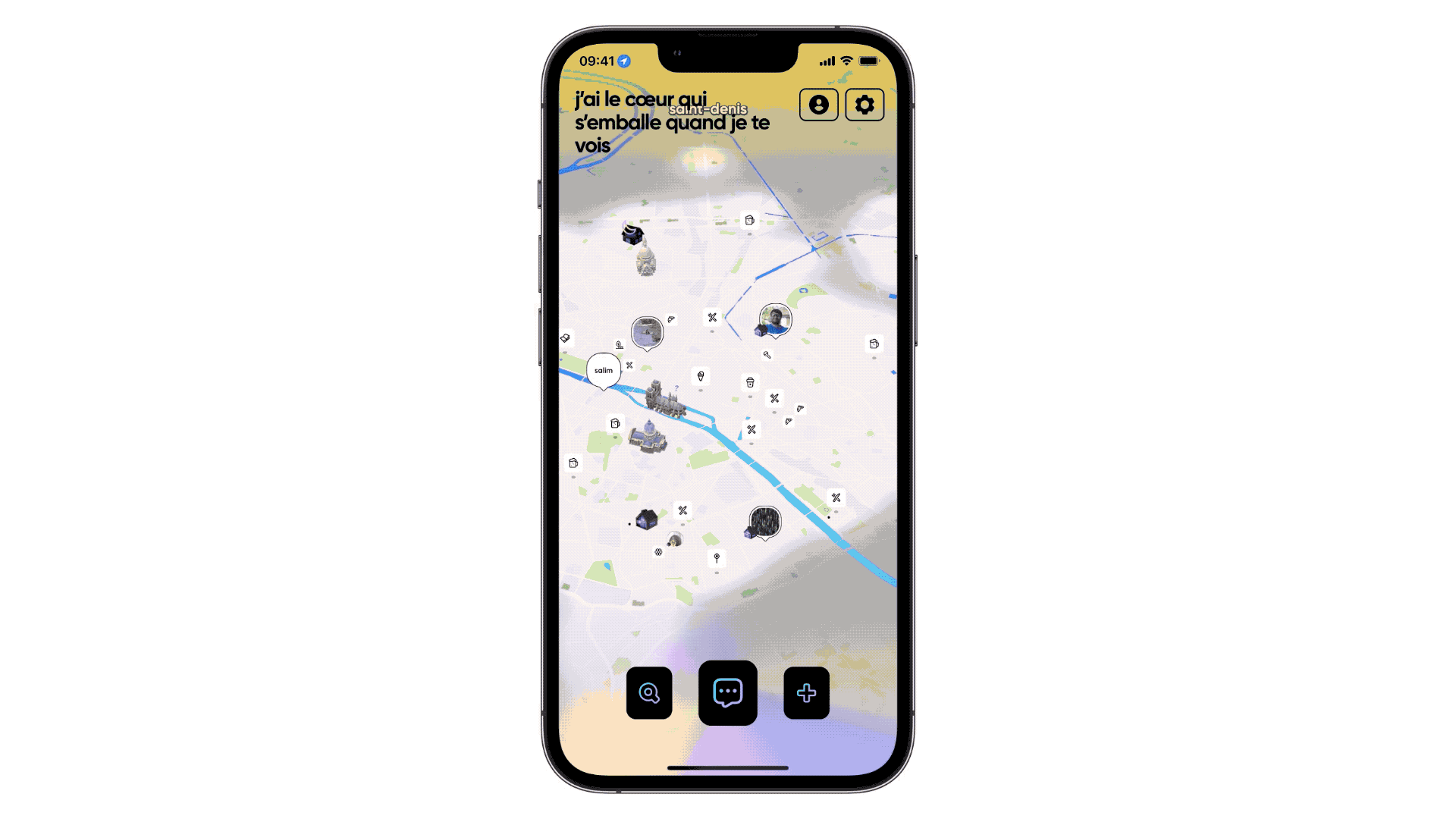Zenly, the popular social app with 35 million monthly active users, released a complete redesign just last month. But it turns out that this was just the first part of a bigger change at the company owned by Snap. Zenly is going to compete with the likes of Google Maps and Apple Maps as it has begun rolling out its own mapping data and engine.
This massive project began more than three years ago. And the result is a beautiful, living and breathing mapping experience. There are a ton of animations, thoughtful details and delightful easter eggs. For this reason, comparing Zenly’s maps with Google Maps or Apple Maps isn’t exactly fair.
“When I started at Zenly we were working with MapKit and Google Maps SDK. We were frustrated about not being able to express the ideas that we had,” Charly Delaroche, the software engineering manager that has led the map effort at Zenly, told me. “Knowing that the core of Zenly is a map, it was really frustrating — not being able to control it.”
This is how Zenly’s mapping project started under the codename ‘Wonka’. While Zenly started as a way to see what your friends are up to, the company wanted to control and own the canvas to expand beyond this location sharing feature. For instance, the new Zenly lets you search for places — not just people.
And starting a new maps app from scratch in 2019 presents many advantages. You don’t have to carry over the legacy of an old codebase that can run on old iPhones and Android devices. Knowing that it would be a multi-year project, the team targeted newer phones, which are not so new today.
For instance, on iOS, Zenly requires iOS 12. All devices that run iOS 12 support the new Zenly map. “What we called newer phones then is really current phones right now,” Delaroche said. “We wanted to do something that was more 3D and used video game technology to use the maximum performance of the device,” he added.
Image Credits: TechCrunch
A personal map
Apple Maps and Google Maps keep getting better and better. A quick look at Justin O’Beirne’s website will show you how detailed these two products have become.
But there’s one issue with these existing apps. They are a bit static and focused on giving you as much information as possible.
“The map that you’re using every day, they weren’t made for you. Everyone is seeing the same map,” Delaroche said.
For instance, Zenly displays a ‘fog of war’ on the map view. If you’ve played real-time strategy games, you’re already familiar with this feature. It displays a fog on top of the map if you’ve never been to a location so that you know where you should head next to explore new areas.
Right now, Zenly adds this layer on top of the map. They are two distinct elements. With Zenly’s own maps, the fog of war is seamlessly integrated in the map, which means that it looks better and is more customizable.
Similarly, when Zenly wants to show you your best friends, it doesn’t have to figure out whether your friend’s name appears on top of a city name. Zenly’s own map engine can prioritize your friend’s name over the city name when it makes sense.

Image Credits: Zenly
Reconstructing a global map with a team of 10
Zenly has built a global map. And yet, there are currently only 10 people working on the mapping project. The basis of Zenly’s map is accurate data and algorithmic transformation.
The company leveraged open-source data from OpenStreetMap and it acquired proprietary data sets from third-party partners. After that, the company created a ton of rules to understand what’s on the map and recreate it in Zenly’s style.
“We added many rules to transform it from something flat to something interesting,” Charly Delaroche said.
For instance, Zenly has classified different areas depending on their intrinsic nature. When there’s a river, Zenly knows that it’s water and users can tap on it to get a splashing effect. When there’s a forest, Zenly adds 3D trees to approximate the real-life version.
As for roads, Zenly automatically adds tiny cars and trucks that move up and down the street — yes, it looks really cute. There are also boats, ducks, golf carts and sea creatures.
Everything is automatically generated from various data sets and Zenly’s algorithmic rules. The company doesn’t manually edit maps to make them more accurate.
And then, there are landmarks — the only thing that is 100% handmade. The company has built its own art editor and created 3D models for popular landmarks. It works with studios for those assets, such as Ocellus Studio (based in Lyon) and Nieko Play (based in Lithuania).
I spent a lot of time looking at landmarks in Paris, from the Eiffel Tower to the Louvre, the Arc de Triomphe and more. There are still some missing landmarks, such as the statues on the Place de la République or Place de la Nation.
But the existing landmarks are beautiful. In that case, Zenly isn’t trying to recreate these landmarks. These are playful representations of iconic places.
Landmarks also have a purpose. People who live in big cities tend to identify where they are based on surrounding landmarks. With the new Zenly map, you can instantly identify where your friends are hanging out without reading any street name.
A new engine
In addition to data, Zenly had to create a 3D engine from scratch. Everything is custom made. It’s a fully cross-platform engine in low-level C and C++ code. It supports physically based rendering, deferred rendering and temporal shadow maps.
Of course, it doesn’t look as good as a 3D mobile game. But it’s fast. You can move around the map without any major performance hit. More importantly, there is no loading screen when you launch the app. It still feels like a social app — not a video game.
In addition to basic animations for cars and boats, the water is also animated and reflects light. At any point in time, the sun is accurately positioned so that shadows are more realistic as well.
Moving around Zenly becomes a different experience. You don’t swipe and pan to zoom like in other maps apps. You move the 3D camera to look around.
A progressive rollout
Because landmarks are an important feature, Zenly’s new maps are only available in a handful of cities at first —Taipei, Tokyo, Paris, Los Angeles, New York and Seoul.
The rollout started earlier this week, but it’s going to be a progressive rollout. Right now, only 5% of new Zenly users will see the new maps. And users can always change back to the default map style in the settings. But the goal is to roll it out to everyone this year and add a new city every two weeks or so.
Zenly is well aware that it can’t compete with Apple Maps and Google Maps when it comes to data accuracy. But what’s more exciting is that this new mapping engine unlocks a ton of possibilities. The company can integrate social data with mapping data in one seamless view.
“Do we really need to compete and be pixel perfect in every place of the world?” Delaroche said. Clearly, Zenly doesn’t want to be better, it wants to be different. And Zenly’s new map platform is a great starting point for some different features.

